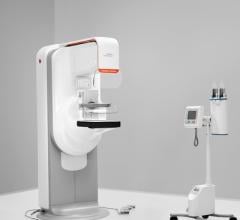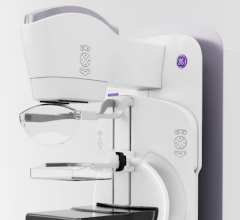December 7, 2015 — A new brachytherapy technique using a shield that rotates in a corkscrew pattern inside a tube-shaped intrauterine applicator could improve cervical cancer treatments, boosting the radiation dose while sparing the healthy tissue around it. Researchers report on the technique in the current issue of Medical Physics, the monthly journal of the American Association of Physicists in Medicine (AAPM), the professional organization of medical physicists, who ensure radiation therapy and imaging procedures are safe and effective.
Current cervical brachytherapy technology involves depositing doses of radiation directly in tumors using sources that emit radiation nearly uniformly around the source. This limits the ability to personalize treatment as the physician may be unable to deliver a desired tumor dose due to limitations imposed by nearby healthy tissues such as the bladder, colon and rectum.
The new technique improves upon the current technology by fitting a rotating shield to the source catheter that delivers the radiation to the tumor. The shield rotates around the radiation source following grooves in the inner wall of the applicator that are shaped like a series of corkscrews (helixes). This new method would allow physicians to provide patients personalized radiation therapy by choosing different grooves to guide treatment and rotating the shield to block the radiation from reaching healthy tissues.
“The multihelix rotating shield delivery technique could enable physicians to deliver doses of radiation to tumors with a degree of conformity that is not possible with conventional, unshielded brachytherapy sources,” said Ryan T. Flynn, Ph.D., the corresponding author and director of medical physics at the University of Iowa Hospitals and Clinics in Iowa City. “The resulting treatment would be more targeted, less toxic and could improve cervical cancer therapy.”
Researchers simulated the delivery of the dose distribution with the proposed technique based on imaging and data of five women with cervical cancer who were treated with external beam radiation therapy and conventional brachytherapy methods. The team found the multihelix rotating shield brachytherapy method to be technically feasible to deliver, and determined that a higher radiation dose could be delivered to the tumor than is possible with conventional techniques without exceeding the tolerance doses of the bladder, rectum and colon. The goal of the research team is to build a prototype of the multihelix rotating shield brachytherapy system and begin clinical trials in women in several years, Flynn said.
“This shows significant promise of a future in which women with cervical cancer could receive safer, more effective cancer treatment,” said M. Saiful Huq, Ph.D., chair of the AAPM Science Council Therapy Physics Committee and professor and director of medical physics at University of Pittsburgh Cancer Institute and UPMC CancerCenter. “The cutting-edge science demonstrates the leading role medical physicists play in pushing the envelope to continually improve patient care.”
Co-authors of the study in addition to Flynn are: Hossein Dadkhah, M.S., Yusung Kim Ph.D., and Xiaodong Wu, Ph.D., of the University of Iowa.
For more information: www.aapm.org


 December 16, 2025
December 16, 2025 








